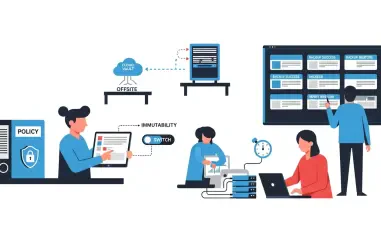Malik Haidar is a distinguished cybersecurity expert with in-depth experience in defending against threats within multinational corporations. His knowledge spans analytics, intelligence, and the integration of business insights into cybersecurity strategies, making him an authority on the matter. In this interview, we explore the nuances of cloud security, specifically in Salesforce, the risks of data management assumptions, and the importance of comprehensive backup strategies.
What does the shared responsibility model in Salesforce entail?
The shared responsibility model is fundamental to understanding cloud security. In Salesforce, the platform provider—Salesforce itself—is tasked with ensuring uptime and infrastructure security. However, when it comes to the data you input into Salesforce, that responsibility falls on you, the user. This means you’re tasked with safeguarding your data, metadata, and configurations. Essentially, while Salesforce offers the secured space, it’s up to you to protect what you put into it.
What are some risks associated with assuming that cloud data is automatically safe?
Assuming cloud data is inherently safe can lead to crucial oversights. Accidental deletions, for example, can happen easily through user errors or system faults. Once lost, retrieving these records can be difficult without robust backup protocols. Moreover, data might get corrupted through integration issues or malicious activities, leading to significant disruptions. The lack of automatic safety means organizations need proactive measures to counter these potential threats.
Why is a backup and recovery plan critical for Salesforce users?
A backup and recovery plan is indispensable because the Salesforce Recycle Bin only covers small, short-term mistakes. However, data is automatically purged after 15 days and doesn’t include crucial metadata. Therefore, for long-term safety and full recovery capabilities, businesses need a comprehensive plan that allows restoration beyond what Salesforce’s limited toolkit offers. This is especially important in situations beyond routine errors—like data corruption or unexpected attacks.
In what ways can businesses ensure their Salesforce data resilience?
Ensuring data resilience involves having detailed strategies like point-in-time recovery, which can invaluable when data needs to be reverted to a specific state after an incident. Furthermore, audit and compliance requirements demand thorough documentation and backup, which means generic tools like the Recycle Bin are insufficient. Meeting regulatory standards requires structured and exhaustive backup systems to safeguard and quickly retrieve critical data.
What should be included in a comprehensive backup strategy for Salesforce?
A comprehensive backup strategy should include functionality for granular restores, enabling the recovery of specific pieces of data without disrupting the broader system. It’s also critical to back up metadata—such as workflows and custom configurations—because this information structures how your Salesforce instance functions. Without it, even intact data could become unusable.
How can businesses ensure their backup strategy meets compliance demands?
To align with compliance demands, businesses must implement retention policies that accurately reflect regulatory requirements. This means understanding the specific retention periods mandated by laws like GDPR or HIPAA and demonstrating due diligence during audits. Failure to meet these standards could result in significant legal repercussions.
Why is it important to test backup recovery processes regularly?
Regular testing of recovery processes is crucial to confirm the effectiveness of your strategies. Without real-world drills, there’s no assurance that your backup will work when needed. Skipping this step can lead to disastrous consequences during an actual data loss incident, as untested systems often fail when put to the test under real conditions.
How should developers handle data to prevent compliance violations?
Developers should employ tools like sandbox seeding and data masking to handle data responsibly. These practices ensure that while development and testing occur, sensitive data is protected. This prevents unauthorized access and potential compliance violations, maintaining secure development environments.
What benefits does Veeam Data Cloud for Salesforce provide?
Veeam Data Cloud for Salesforce enhances data resilience by tackling problems such as accidental deletions and automation errors. It provides robust tools to swiftly recover data without piecing together fragmented solutions, thereby ensuring that Salesforce remains a reliable aspect of business operations without interruptions.
Do you have any advice for our readers?
Always stay vigilant and proactive about your data security. As the digital landscape evolves, so do threats. Regularly assess your backup strategies and make sure they align not only with your current business needs but also with future resilience. Data protection is an ongoing process, requiring continuous adaptation and improvement.













